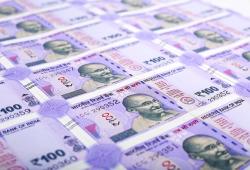The Budget each year generates a huge hype. This year was no exception. Post demonetisation, all eyes were on the Budget to see what is being done to alleviate the pain on account of the cash crunch, especially for the informal sector and small businesses. There has also been keen interest to see whether the gains on account of demonetisation were going to be reflected in the revised estimates for tax collection in the current year and in the projections for the next year.
Alleviating the pain
Budget 2017-18 did not disappoint on the first account. The budget proposals post demonetisation range from increased allocation for agriculture, the rural population and anti-poverty schemes to income-tax sops for small businesses and small income-tax payers. Thus it has something for every segment of the lower income classes in society. Increased allocation for infrastructure and measures for affordable housing and real estate hit the right note to cheer private investment. At the same time it did not disturb well-heeled investors in the stock market as it did not change adversely the capital gains taxes as expected (rather it improved it by reducing the holding period to two years). It also managed to satisfy the fiscal analysts by sticking closely to the fiscal targets.
The budget proposals post demonetisation range from increased allocation for agriculture, the rural population and anti-poverty schemes to income-tax sops for small businesses and small income-tax payers. Thus it has something for every segment of the lower income classes in society.
Impact I-T collection
The revised estimates (RE) of income tax under gross tax revenue in 2016-17, at Rs 3,53,174 crore, strangely, is the same as the budget estimate (BE) figure. Does this mean there is no impact of demonetisation? Alternatively, does this mean that data is not available or does it mean that the BE for 2016-17 was pegged at an unrealistic level?
As against the actual growth in taxes on income of 8.2 per cent in 2015-16 over the previous year, the budget estimate for 2016-17 showed an increase of 22.8 per cent, when demonetisation was not on the cards. Considering that a considerable amount of demonetised notes were deposited before December 31, 2016, one would have expected a significant increase in income tax collection at the rate of 30 per cent for the current year’s disclosed income and at 50 per cent for undisclosed income for deposits after December 16 under the scheme that was valid till end December.
Hopefully, the actuals will work out much higher than the RE. For the year 2017-18, the BE for income taxes is placed at Rs 4,41,255 crore — growth of 24.9 per cent. This seems optimistic especially when the 50 per cent scheme is no longer available. Also there would have been an unusual disclosure of income for 2016-17 in the wake of demonetisation and this may not repeat in the next year. The Government will do well to transparently put out the final data of income tax collections for the current year for the public to draw comfort that their pain has not been in vain!
Impact on non-debt revenue
As a fallout of demonetisation, another source of revenue announced on December 16 was the Pradhan Mantri Garib Kalyan Yojana where persons could deposit undisclosed income by paying tax of 50 per cent and place 25 per cent of such undisclosed income with the Government as a deposit for four years without any interest. The scheme is available till March 2017.
On December 19, the RBI announced that KYC and other restrictions would not be applicable to tenders of “specified bank notes” for the purpose of deposits under the Taxation and Investment Regime for the PMGKY. This, together with the possible increase in PPF accounts between November 8 and November 23 (the date after which the RBI advised banks not to accept the SBNs in small savings schemes) could perhaps account for the large increase shown in the figure of Rs 90,377 crore (RE) against Rs 22,108 crore (BE) under the head, securities against small savings. The same head shows an increase of over Rs 1 lakh crore in 2017-18.
Is it the intention to continue the scheme beyond March 2017? This single item is responsible for the sizeable fall in net market borrowing of the Government shown at Rs 3,55,028 crore. The reduced market borrowing has sent extremely positive signals in the bond market and on interest rates in general. Hopefully it will soon be made clear as to how this calculation has been done so that the projected market borrowings are not overshot.
No data is yet available of the extent of extinguishment of the currency liability on the demonetised notes that were expected to give a bonanza to the budget revenue. It is not clear whether the Government has taken any credit for this in the RE of dividend and profits (presumably including surplus transfer from the RBI) of Rs 1,53,222 crore for 2016-17.
Fiscal arithmetic
The GDP for 2017-18 is projected at Rs 1,68,47,455 crore assuming 11.75 per cent growth over the RE of 2016-2017 (Rs 1,50,75,429 crore). It is not clear from where the estimates have been obtained. Last year the Budget used the CSO’s advance estimate that is not yet available for 2017-18. Moreover, the CSO has revised upward the GDP growth for last year. In light of this, the assumption of 11.75 per cent GDP growth for 2017-18 may be optimistic. Would this alter any of the calculations for the fiscal ratios?
(Usha Thorat is a former Deputy Governor of RBI)







